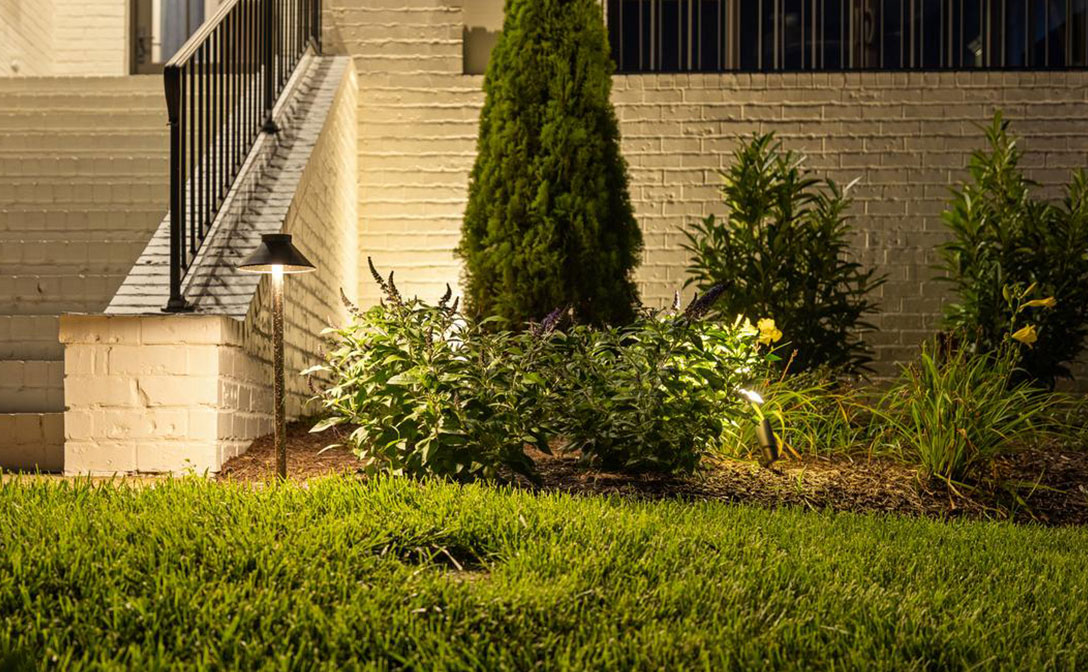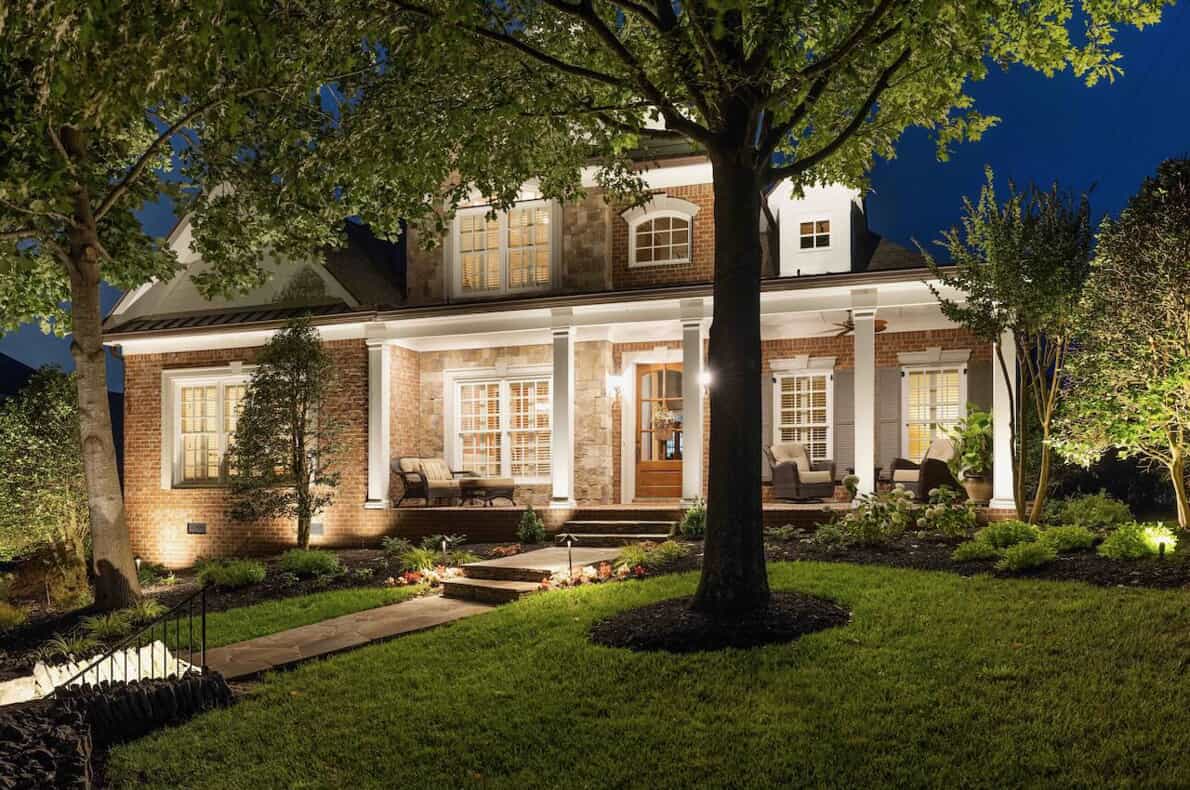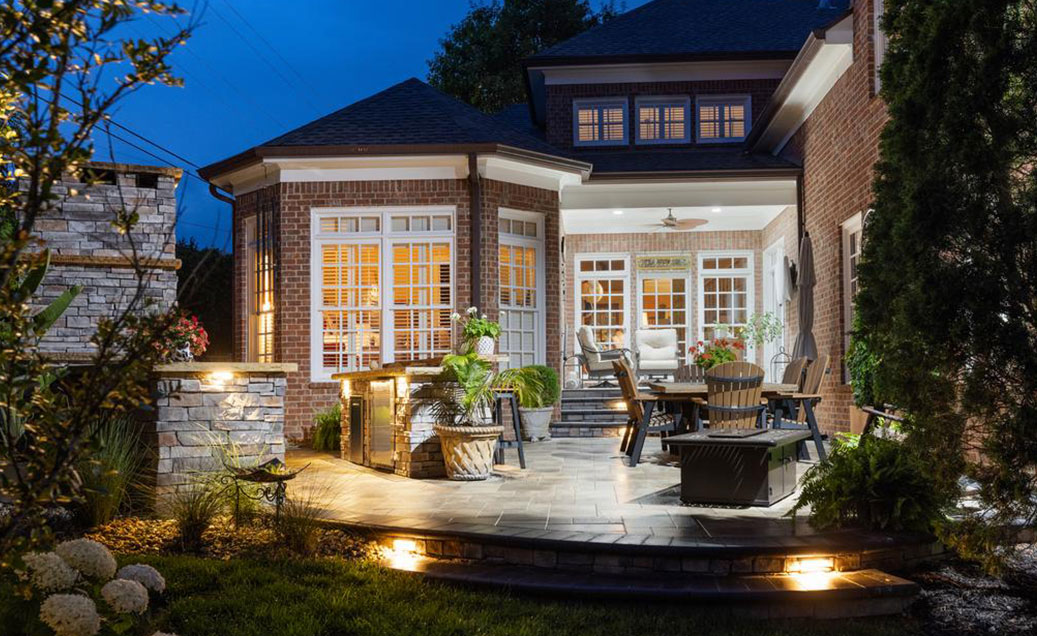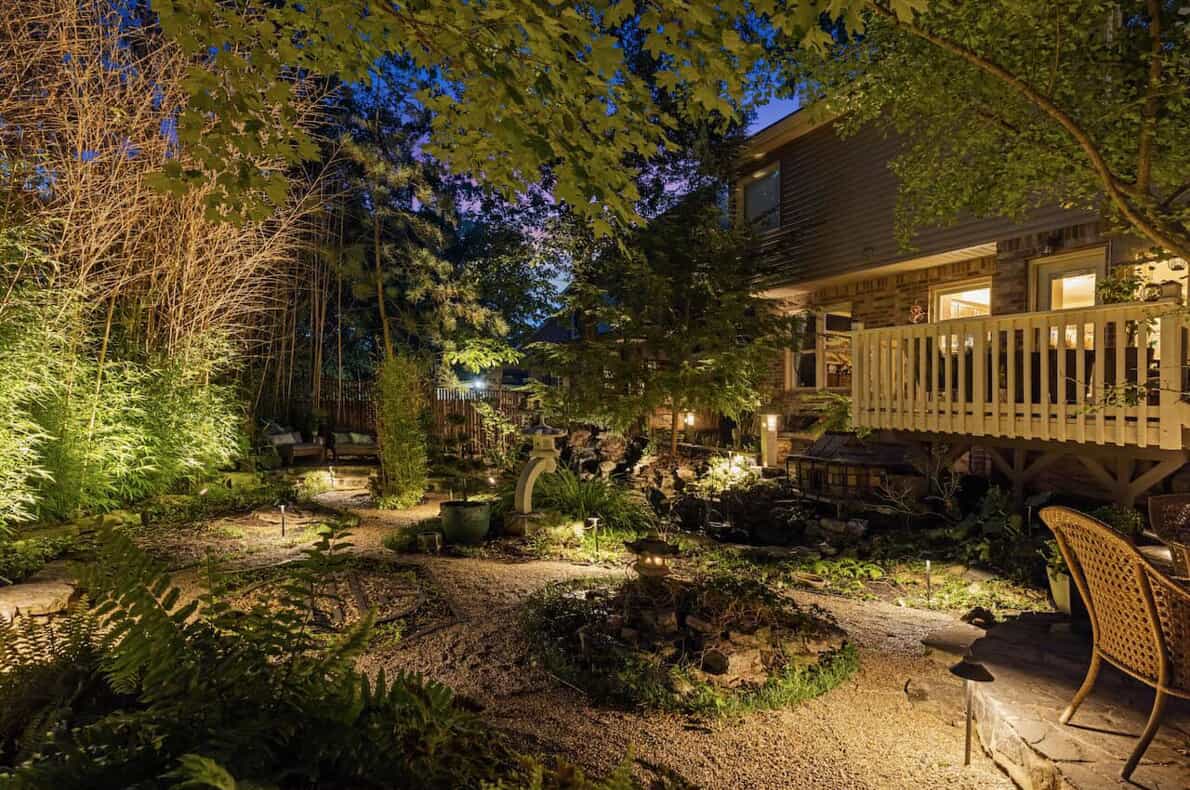A Homeowners Guide to Avoiding Common Landscape Lighting Mistakes
Are you ready to transform your outdoor space with stunning landscape lighting, but worried about making costly mistakes? You’re not alone—many homeowners dive into illuminating their gardens with enthusiasm, only to find their efforts don’t quite shine the way they envisioned.
With so many options and approaches available, it’s easy to get lost in the details and overlook essential principles that can make or break your project. From over-brightening to poor fixture placement, these common pitfalls can lead to wasted time, money, and effort.
If you're planning to enhance your outdoor spaces with landscape lighting, it's crucial to understand the basics to avoid common blunders. A well-thought-out lighting plan not only showcases your home’s best features but also sets the mood for gatherings and relaxation. So before you begin illuminating your yard, let’s explore some common landscape lighting mistakes and how to sidestep them for a beautifully lit outdoor oasis.
Why Good Lighting is Crucial for Your Landscaping and Outdoor Living Spaces
Good lighting transforms your outdoor spaces from mere backdrops to vibrant extensions of your home. When you integrate state-of-the-art landscape lighting fixtures, you're both illuminating your garden, and you're enhancing the entire ambiance of your outdoor living spaces.
Strategic placement of these fixtures can highlight architectural features, draw attention to prized plantings, and increase the functionality of your patios and walkways after dusk.
Think beyond the basics.
Opt for illumination that offers both aesthetics and utility. With innovative lighting solutions, you can create a compelling narrative in your landscape that not only captivates but also guarantees safety and security.
Embrace the transformative power of good lighting to elevate your outdoor experience and extend your living space seamlessly into the outdoors.
Common Outdoor Lighting Mistakes by Homeowners
As you explore enhancing your home's exterior with landscape lighting, it's essential to steer clear of common pitfalls.
You might inadvertently set up blinding lights that annoy your family or neighbors or use inefficient lighting options like non-LED bulbs, or use the wrong type of fixtures for certain spaces and functions.
We'll go through the most common errors most homeowners can make when getting their outdoor lighting project up and running. And then, how to best avoid them.
Blinding Lights Towards Home Residents or Passers-by
When installing outdoor lighting, many homeowners inadvertently position fixtures in ways that cast harsh, blinding light directly into the eyes of residents or passers-by. This mistake not only creates unwelcome direct glare but also diminishes the aesthetic appeal of your space.
To combat this, consider the angle and positioning of your lighting fixtures. Aim light sources downward to illuminate paths and highlight landscaping without flooding the area with excessive brightness. Use glare shields on fixtures to direct light away from a direct line of sight, enhancing comfort without sacrificing functionality.
Failing to Use LED Lighting
Choosing traditional lighting options over LED can considerably increase your energy costs and maintenance demands.
Here's why you should switch to LED lighting for your outdoor spaces.
- Long-Term Savings: LED light fixtures aren't only more energy-efficient, but they also have a notably longer lifespan than conventional bulbs. This means less frequent replacements and, as a result, less hassle for you.
- Highest Quality: Furthermore, LED lighting offers superior quality regarding brightness and color accuracy, enhancing the aesthetics of your outdoor areas while ensuring safety.
By integrating LED into your outdoor lighting plan, you're adopting a cost-effective, innovative solution that keeps your spaces illuminated more efficiently.
Don't stick to outdated methods; embrace LED and see the difference in your utility bills and lighting quality.

Don't Make Pathways Look Like Airport Runways
Many homeowners mistakenly over-light their pathways, giving them the stark, overly bright appearance of an airport runway. You don't want your outdoor space to feel like it's under a spotlight.
Instead, aim for a welcoming ambiance that enhances both safety and aesthetics. Use pathway lighting strategically; place them at intervals that gently illuminate the walkway without overwhelming it. This approach not only prevents the blinding effect of too many lights but also highlights your landscape's natural beauty.
Think subtlety rather than saturation. Use fixtures that blend well with your garden, adding a touch of elegance.
Over-Illuminating an Area
Building on the idea of avoiding an airport runway effect on pathways, it's also important to contemplate the overall illumination of your outdoor areas.
Overdoing it with too much light can wash out the beauty of your space, giving it a stark, commercial feel rather than a warm, welcoming ambiance. You're aiming for a balance where the light enhances, not overwhelms.
Use lighting strategically to highlight trees, garden features, or architectural details without turning your backyard into a bright spectacle. Opt for landscape lights that offer soft, diffused glow, and consider using timers or dimmers to adjust the intensity according to the time of day or the event.
Under-Illuminating Sections of Your Outdoor Space
While avoiding the trap of over-illumination, it's just as critical not to neglect certain areas of your outdoor space.
Under-illuminating can leave parts of your property dark, reducing the overall curb appeal and potentially missing out on an opportunity to showcase key features of your landscaping.
When you strategically place outdoor lights, you're not just making your space usable at night; you're also enhancing the aesthetic appeal and the functional value of your property.
Think of lighting as a way to guide visitors' eyes, drawing attention to the beautiful aspects of your garden or the architectural details of your home.
Don't let dim spots detract from the vibrant, welcoming ambiance you're aiming to create.
Fail to Give Consistent Illumination
A common oversight in landscape lighting is failing to provide consistent illumination across your entire outdoor space.
You've got to think strategically about the placement and type of bulbs you use. Mixing different types can lead to uneven lighting, which is one of the top outdoor lighting mistakes. To avoid this, choose bulbs with similar brightness and color output to guarantee a unified look.
Additionally, consider using glare shields. These handy devices help direct light where it's needed, preventing bright spots and shadowed areas, which can disrupt the overall harmony of your outdoor haven.
This approach not only enhances the aesthetics but also increases the functionality of your space, making it safer and more inviting at night.
Forgetting to Consider Color Temperature
One common mistake you might make when setting up your landscape lighting is overlooking the importance of color temperature, which is essential for enhancing the overall mood and functionality of your outdoor spaces.
Different color temperatures can dramatically affect how colors and features appear at night. For example, a warmer color temperature might enhance the cozy, welcoming feel of a garden path. In comparison, a cooler temperature could better highlight the modern and innovative aspects of your landscape designs.

Forgetting to Highlight Key Architectural Features
Many homeowners overlook highlighting key architectural features when planning their landscape lighting, which can lead to a lackluster outdoor environment. This is one of the common mistakes that diminish the potential of your property's nighttime appeal.
By strategically placing lights to accentuate unique structures like archways, columns, or intricate masonry, you elevate not just the aesthetic but also the functional value of your outdoor space.
Consider using spotlights or uplighting to draw attention to these elements, creating a dramatic impact that enhances your home's character.
Mismatched Light Fixtures for the Space and Use
While highlighting key architectural features is important, choosing the right light fixtures for each space and purpose is equally essential.
You've got to think beyond just the style; consider the function and ambiance each area requires. Are you lighting a pathway, a sitting area, or a dramatic garden feature?
Path lights differ vastly from floodlights or accent lights in both intensity and spread. Don't just pick any fixture; tailor your choices to enhance both the beauty and usability of your spaces.
Use warmer tones for relaxation areas and brighter, more focused lights for security or feature emphasis.
It's not just about illumination—it's about creating a vibe that resonates with your lifestyle and aesthetic preferences.
Being Cheap With The Lighting Fixtures Despite High Expectations
Investing in quality lighting fixtures can make all the difference in your outdoor spaces, yet it's tempting to cut costs. However, skimping on quality for a lower price point can lead to disappointment.
You're aiming for an innovative and enchanting outdoor environment, not just illumination. Cheap fixtures often fail to deliver on both performance and durability, succumbing to weather or wear much faster.
This ultimately leads to more frequent replacements or upgrades, which isn't cost-effective in the long run.
The solution is robust, well-designed lighting that aligns with your visionary goals.
Faulty Wiring Installation
Faulty wiring installation can seriously undermine your landscape lighting project, leading to both functional failures and safety hazards.
You're investing in an innovative outdoor space, so it's vital to guarantee that wiring isn't just an afterthought. You will need high-quality, weather-resistant wires that match your system's requirements and local electrical codes.
It's more than just connecting lights; it's about future-proofing your investment. Don't skimp on professional installation unless you're skilled in electrical work. Incorrectly installed wiring can lead to shorts and even fires.
Use conduits and proper sealing techniques to protect wires from the elements. Remember, cutting corners now might cost you more in repairs and replacements later.
Guarantee your project shines safely and sustainably by prioritizing proper wiring practices.
Failing to Plan for Seasonal Changes
One common mistake homeowners make isn't planning for the seasonal changes that affect landscape lighting.
As you explore innovative solutions, remember that your outdoor space doesn't look the same year-round. Sunlight patterns shift, and plant growth can alter light paths dramatically.
To stay ahead, consider adjustable fixtures that you can reposition as needed. Opt for smart lighting systems that adapt intensity based on available natural light, guaranteeing ideal illumination regardless of season.
Don't forget to assess the impact of snow or fallen leaves, which can block lights or create hazards.
Using the Wrong Style of Path Lights
Selecting the wrong style of path lights can really throw off the aesthetic and functionality of your outdoor spaces.
When you choose path lights, consider the architectural features of your home. Are they modern, traditional, or perhaps rustic? Your lighting should echo this theme.
The key are fixtures that blend seamlessly with your environment, enhancing both visibility and ambiance. Don't just go for the standard designs you see everywhere else.
Explore innovative options like solar-powered or LED path lights that offer durability and energy efficiency. Remember, your choice of lighting shouldn't only guide the way but also elevate the overall charm of your landscape.

Not Mounting Fixtures Properly
Improperly mounted fixtures are a frequent oversight that can considerably detract from the effectiveness and aesthetics of your landscape lighting. Ensuring that each lighting fixture is securely and correctly installed isn't just about reliability; it's about maximizing the innovative potential of your outdoor space.
To avoid common pitfalls, you'll want to use mounts that suit both the weight and design of your fixtures. Don't skimp on this step—cheap mounts can lead to sagging and misaligned lights, which disrupt the visual harmony of your garden or patio. Instead, invest in quality hardware that complements the sophistication of your lighting choices, or hire landscape lighting experts.
Properly mounted lights not only enhance safety by remaining firmly in place but also elevate the overall impact of your outdoor design.
Forgetting to Automate System
After ensuring your fixtures are securely mounted, another step often overlooked is automating your landscape lighting system.
Automation isn't just a fancy buzzword; it's a game-changer for enhancing efficiency and convenience in your outdoor spaces. Imagine your lighting adapting to the time of day, weather conditions, or even special occasions without you having to lift a finger.
You won't have to worry about switching lights on or off, and you'll save energy, too. It's a smart move that integrates technology seamlessly into your daily life.
By setting up systems like timers or smart controls compatible with mobile apps, you're upgrading your entire home experience.
Tips for Avoiding Common Mistakes in Your Landscape Lighting Project
As you commence your landscape lighting project, it's essential to start with a clear vision and a well-thought-out plan, use layers, think about color, and other important tips to take in mind:
Plan Your Lighting Design with a Vision
Many homeowners overlook the importance of having a clear vision when planning their landscape lighting, leading to unsatisfactory results.
You'll want to start with a clear objective. What's your goal? Are you illuminating your walkway for safety, or are you aiming to highlight your garden's best features?
Sketch your yard and mark out where lights could enhance the space. Consider how each fixture serves your overall theme or story.
Don't just think about the practical; envision the dramatic effects you can create.
Use Layers of Light Sources for Depth and Ambiance
To create depth and ambiance in your landscape lighting, consider using multiple layers of light sources.
- Ambient Lighting: Start with ambient lighting to set the overall mood of the space. You can achieve this with soft, widespread lights that illuminate large areas gently.
- Task Lighting: Next, add task lighting for functional areas like walkways or steps; these should be brighter and more focused.
- Accent Lighting: Finally, don't forget accent lighting to highlight specific features such as trees, sculptures, or architectural details.
This layered approach not only enhances your property's aesthetics but also guarantees that each area has appropriate lighting for its purpose.
Experiment with different types of fixtures and placements to find the perfect balance that brings your outdoor space to life.
Invest in Quality, Energy-Efficient Fixtures
You'll want to invest in quality, energy-efficient fixtures that not only save you money in the long run but also reduce your carbon footprint. It goes without saying that the main solution for this are LED options—they're known for their longevity and low energy consumption, yet they provide excellent illumination.
But also don't skimp on the materials either; stainless steel or solid brass offers durability against weather elements, guaranteeing your lights stay functional and attractive for years.
Stick to a Consistent Color Temperature
In your landscape lighting design, maintaining a consistent color temperature across all fixtures is vital.
As we mentioned in the common mistakes list, color temperature, measured in Kelvins, greatly affects the mood and visual continuity of your outdoor spaces.
Opting for a uniform color temperature guarantees that your landscape doesn't end up looking mismatched or chaotic, which can easily happen if you mix warm lights (2700K-3000K) with cool ones (4000K or higher).
You'll want to choose a color temperature that complements both the architecture of your home and the natural colors of your garden. Warm white lights often enhance the greens of plants and provide a cozy, welcoming glow.
Sticking to one shade creates a harmonious, sophisticated appearance that boosts both ambiance and curb appeal.

Position Landscape Lighting Fixtures Strategically for Balance
After ensuring your color temperatures are consistent, the next step is positioning your landscape lighting fixtures to achieve a balanced look.
You'll want to strategically place lights to highlight your home's best features without creating a visually chaotic environment. Think symmetry and balance.
It's not just about illumination but also about creating a harmonious visual flow. Consider the angles at which beams fall, and avoid placing lights so directly that they create harsh shadows or blinding glare.
Instead, choose a setup that layers light softly, enhancing both the functionality and aesthetics of your space.
Regularly Maintain Your Lighting Setup
Ensuring your landscape lighting continues to function at its best requires regular maintenance.
You've got to keep an eye on each element, from bulbs to wiring.
- Replace Bulbs: Start by replacing any burned-out bulbs promptly.
- Inspect Wiring: Next, inspect wires regularly for wear or damage, especially after harsh weather.
- Trim Vegetation: Don't let overgrown plants obscure your lights; trim back foliage to maximize illumination and prevent overheating.
- Clean Fixtures: Finally, cleaning the light fixtures themselves can prevent dirt and debris from dulling their performance.
Adopt a proactive approach by scheduling bi-annual check-ups for your system. Or, better yet, hire landscape lighting companies that not only install your system, but also offer regular professional maintenance year-round. This not only preserves your lighting's functionality but also keeps your outdoor space looking innovative and sharp.
Prioritize Safety for Pathways and Entrances
While planning your landscape lighting, it's vital to prioritize safety for pathways and entrances. You'll want to make certain that these areas are well-lit to prevent trips and falls.
Strategically place lights to highlight steps and uneven surfaces without creating glare that can blind temporarily. Consider motion sensors that activate lighting only when needed, enhancing security while conserving energy.
Additionally, select designs that complement your home's architecture, creating a welcoming path that safely guides your family and visitors to your doorstep.

Experiment Before Installing Permanent Fixtures
Before you commit to permanent installations, it's wise to experiment with your landscape lighting layout. Testing different arrangements lets you visualize how lights enhance your garden's aesthetics and functionality after dark.
Try using temporary stakes to position lights, observing how they illuminate paths, accentuate features, and create ambiance. Consider how shadows and lighting angles affect the space. Does the light make your garden welcoming, or does it cast eerie shadows?
Experimentation isn't just practical; it's a creative process that invites innovation. You'll discover unique lighting combinations that mightn't be apparent in a standard setup.
This flexible approach guarantees that you'll be more satisfied with a lighting scheme that's as dynamic and adaptable as your outdoor living space.
Avoid Costly or Exhausting Mistakes and Hire Professional Lighting Installers
Why risk the pitfalls of DIY landscape lighting when hiring professionals can save you both money and headaches?
Professionals bring not just tools but also an artistic eye, ensuring your lighting enhances your home's best features while maintaining functionality. They're up-to-date on the latest tech and trends, from energy-efficient LEDs to smart outdoor systems that sync with your lifestyle.
By choosing experts, you dodge common errors like poor placement and inadequate wattage, which can diminish your home's appeal and even safety. Plus, they'll navigate installation regulations effortlessly, avoiding fines and unnecessary redos.
Investing in professional installation isn't just paying for a service; it's securing peace of mind and guaranteeing a stunning, innovative outcome.
Conclusion
Now that you're aware of the common pitfalls in landscape lighting, you're equipped to enhance your outdoor spaces effectively. Remember, positioning is key to avoiding glare and maintaining a balanced, consistent lighting scheme is essential.
Don't underestimate the importance of regular maintenance to keep your space safe and inviting. If it all seems intimidating, consider hiring a professional to guarantee your lighting is not only beautiful but also functional and energy-efficient. Light up your landscape the right way!

